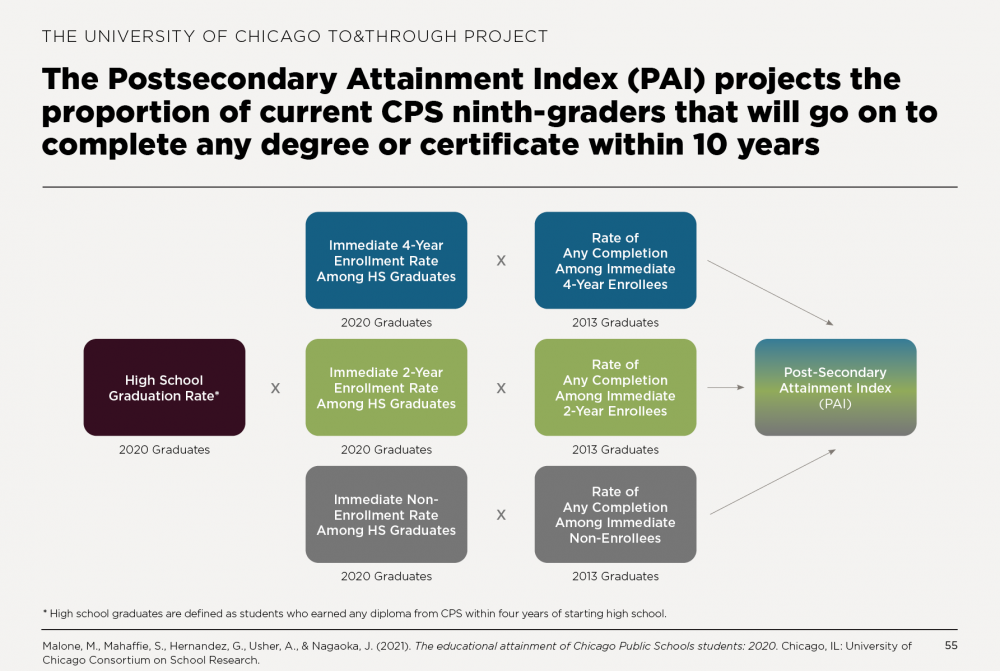The To&Through Project Data Insights visualize how Chicago is faring on its quest to propel more students to and through high school and college, and illustrate the forces and factors that drive college success. Scroll down to explore, or download:
Quick Links:
Factors Driving Student Success | Chicago's Trajectory of Progress |
|---|---|
| Elementary On-Track (Download) | Attainment by Community Area (Download) |
| Freshman Success (Download) | High School Graduation (Download) |
| Sophomore Success (Download) | Immediate College Enrollment (Download) |
| Postsecondary Success (Download) | College Completion (Download) |
| Chicago's Progress (Download) | Projecting Future Attainment (Download) |
Elementary On-Track: Elementary School Students' Grades, Attendance, and Future Outcomes
Freshman Success: A Lever to Increase Future Attainment
Image
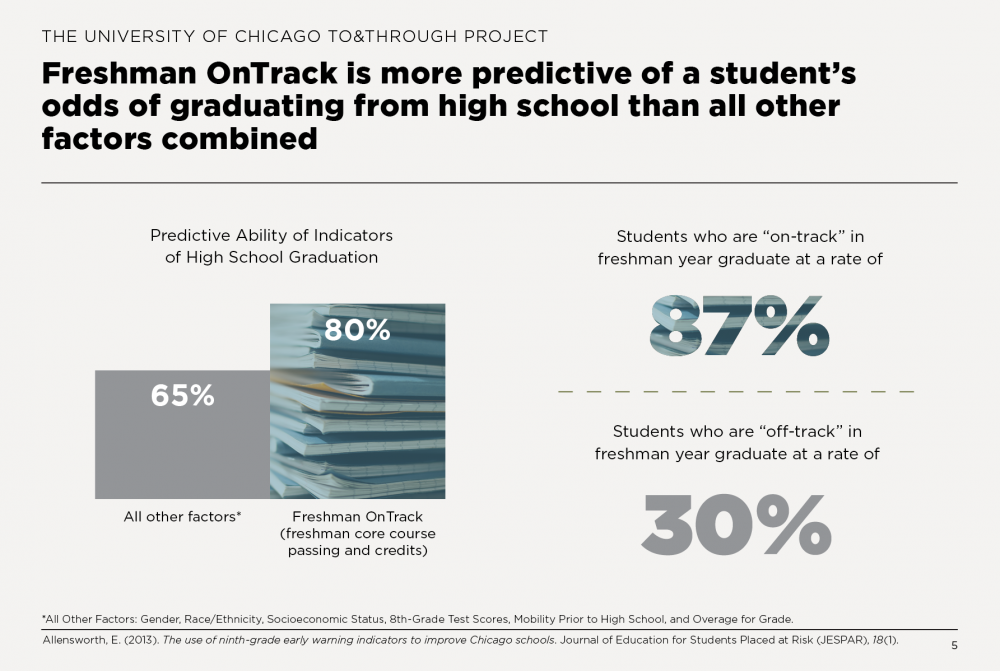

Image
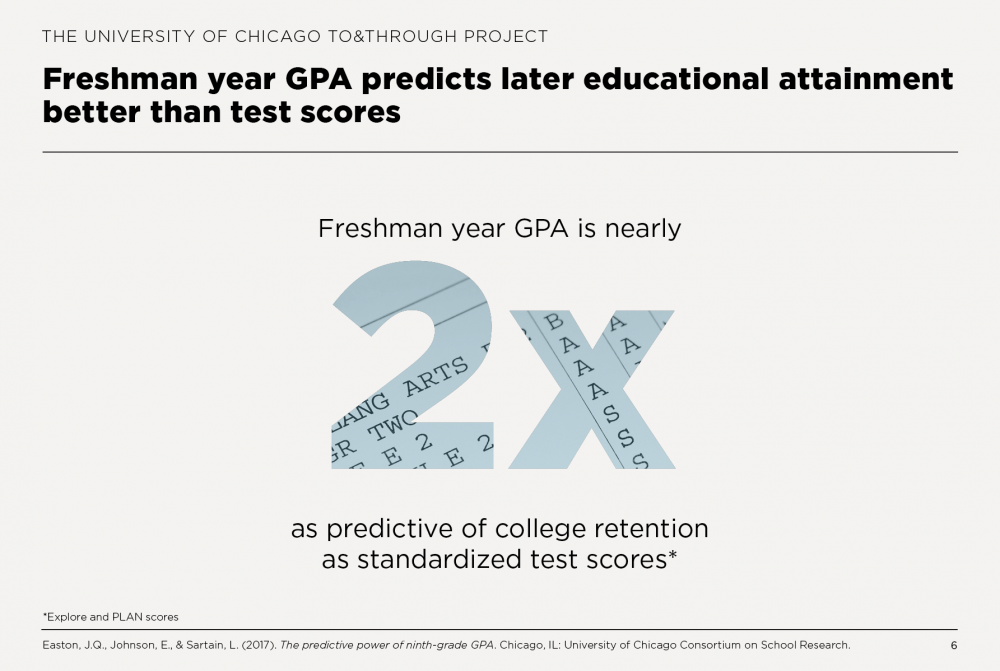

Image
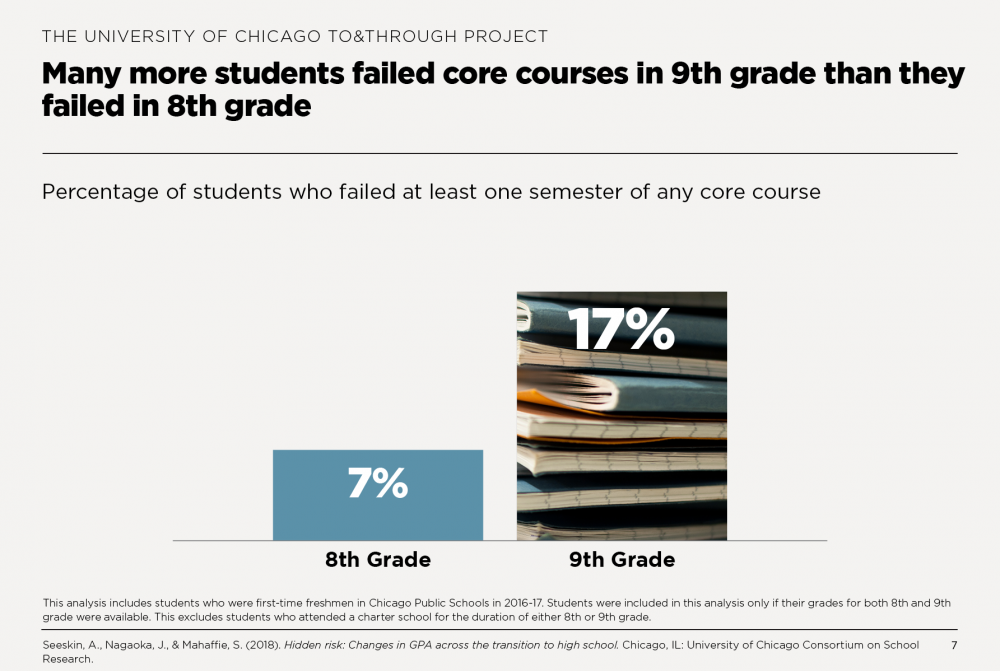

Image
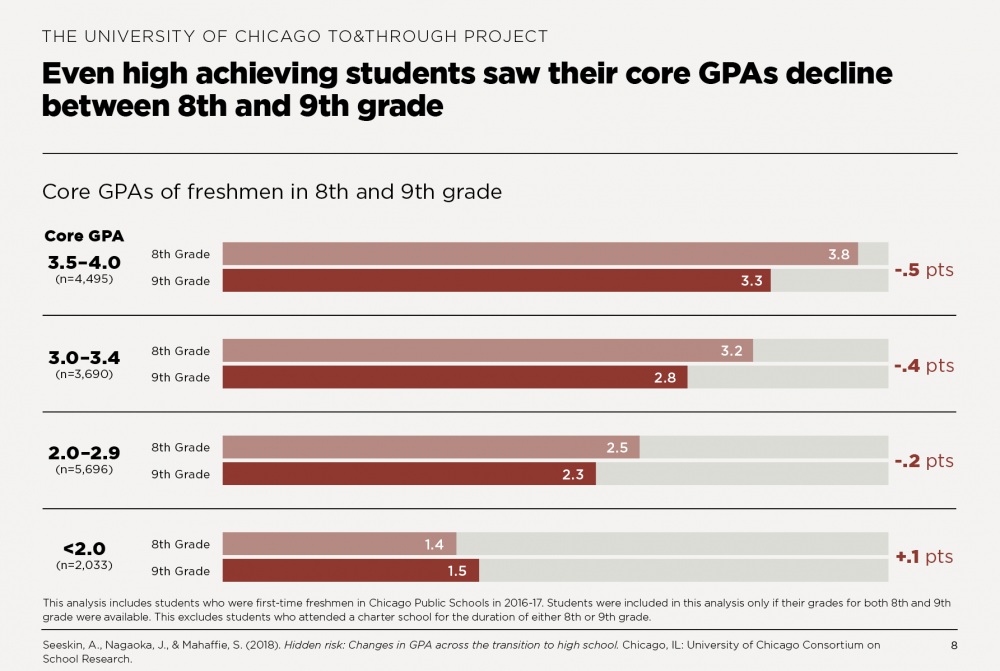

Image
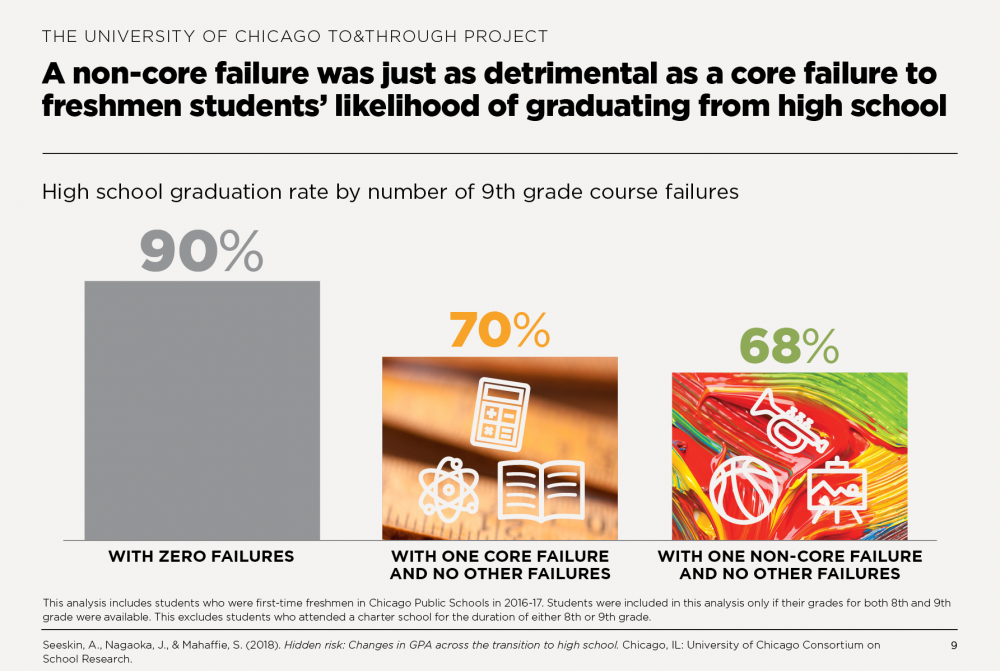

Image
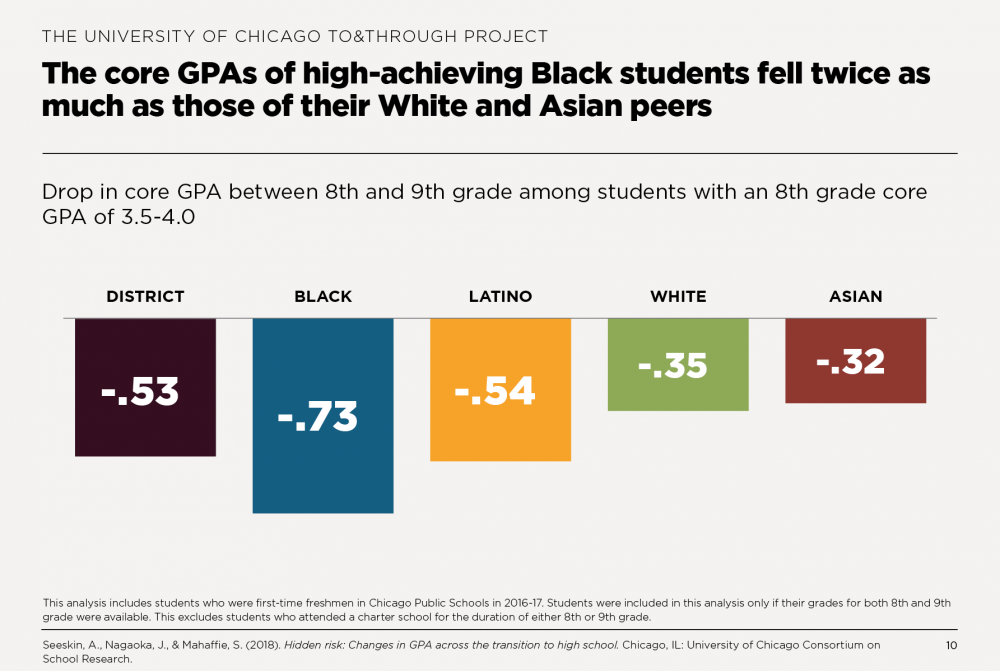

Image
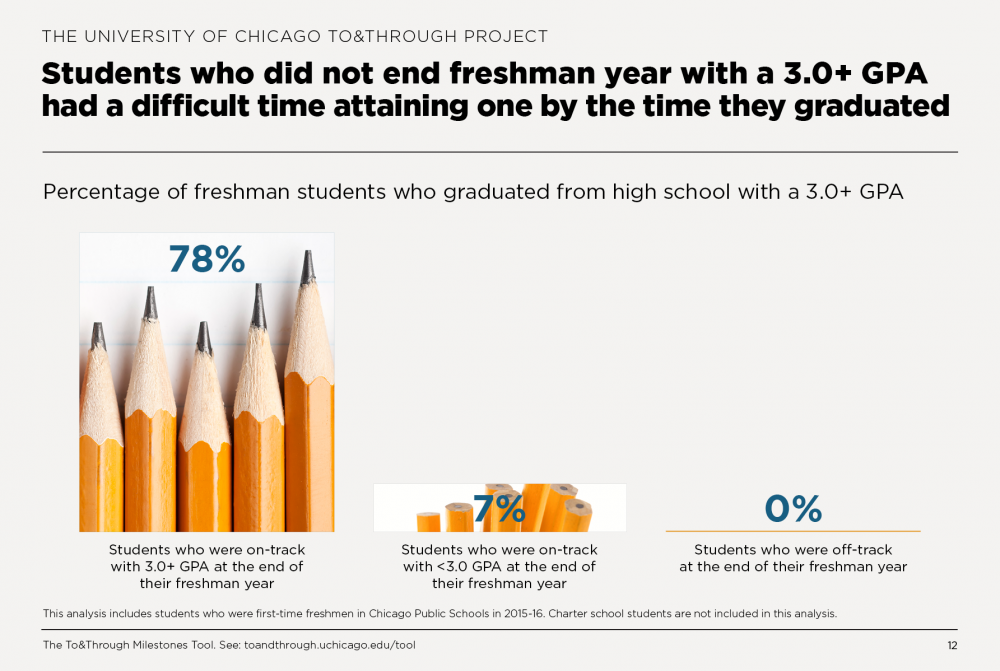

Applying Lessons from Freshman Success to Sophomore Year
Image
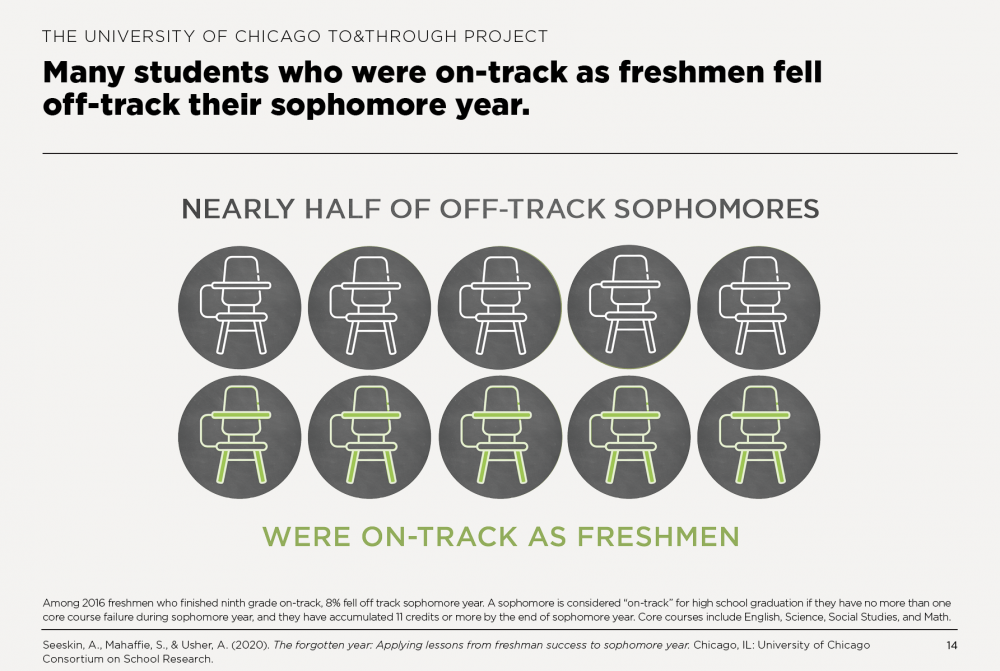

Image
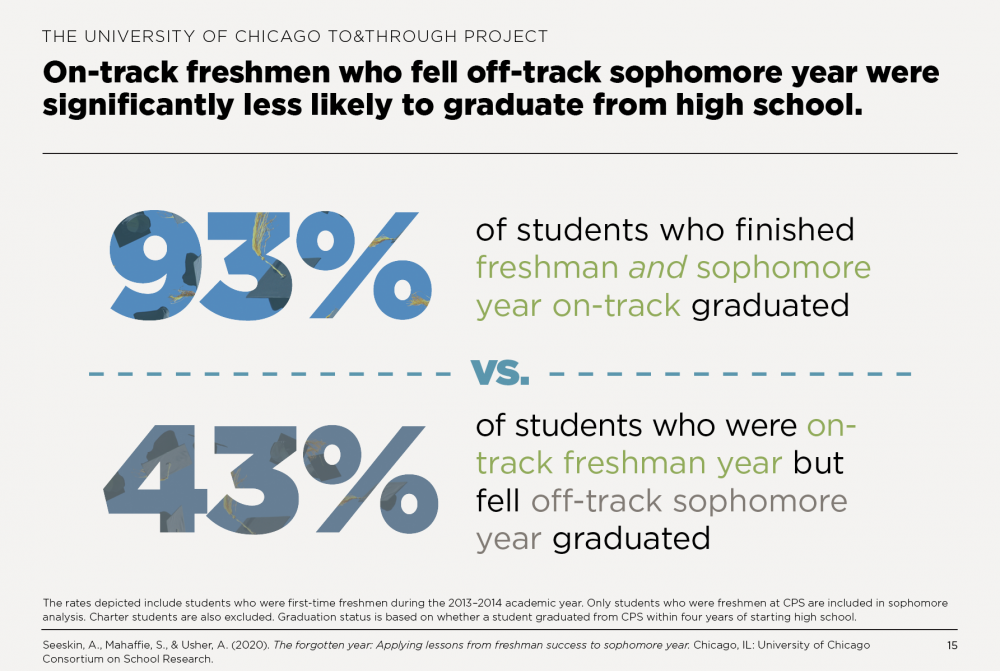

Image
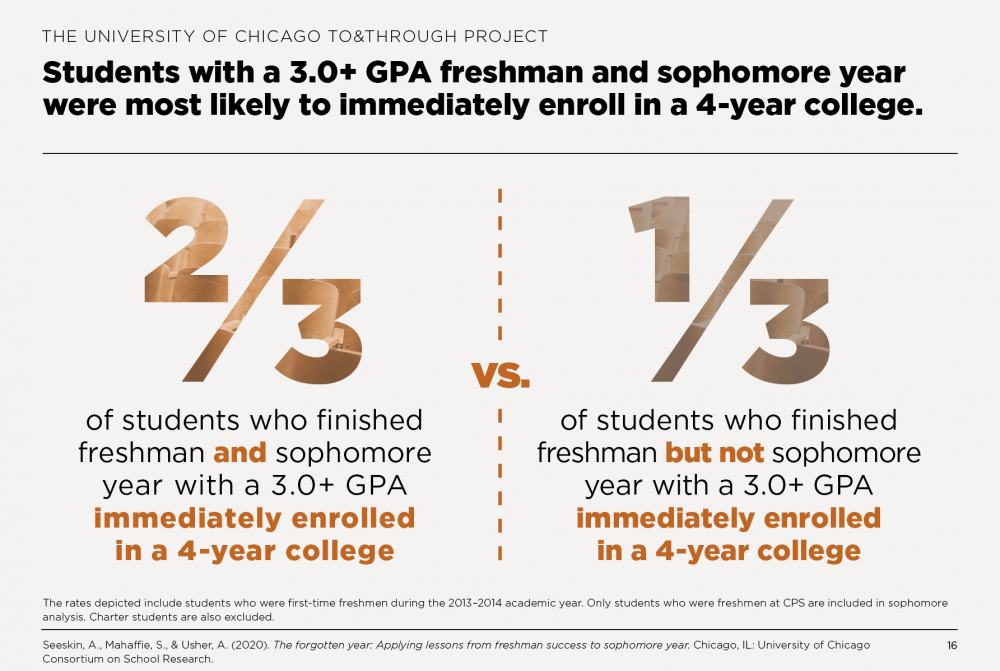

The Importance of Graduating GPAs and Immediate, Continuous Enrollment
Image
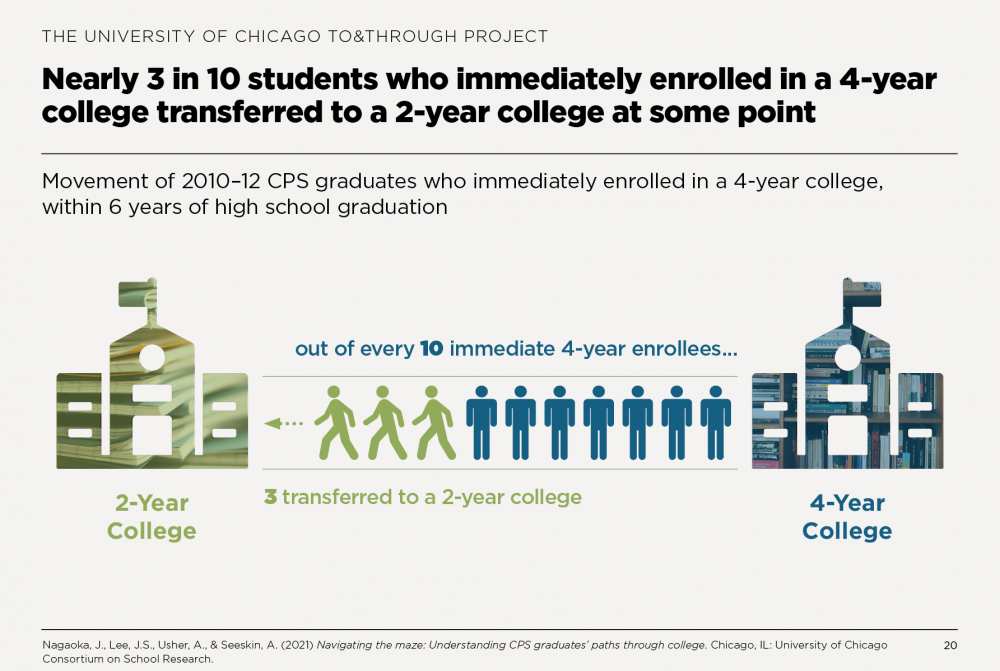

Image
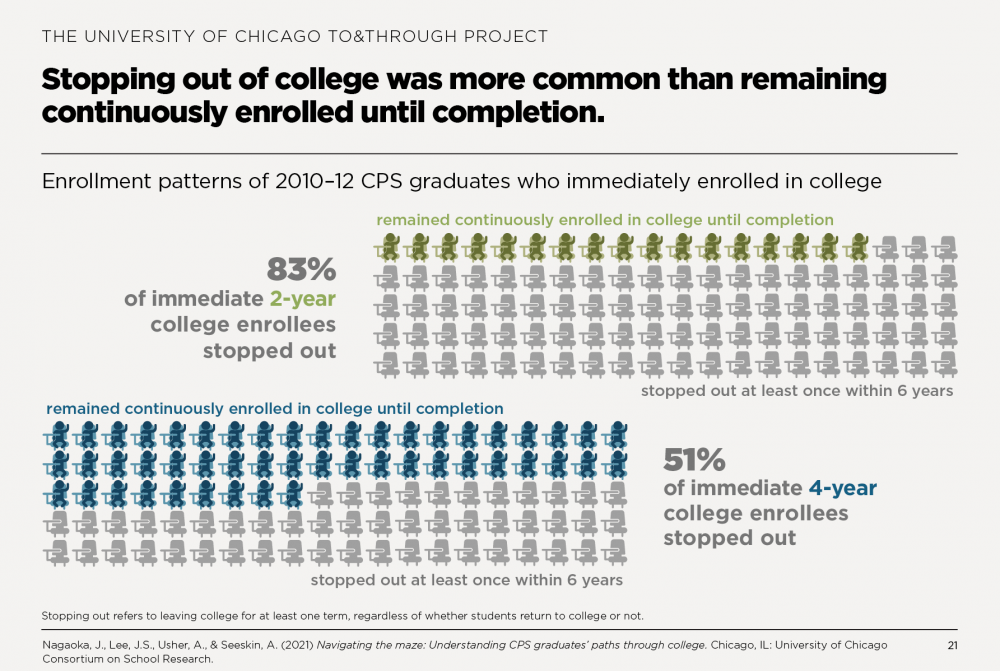

Image
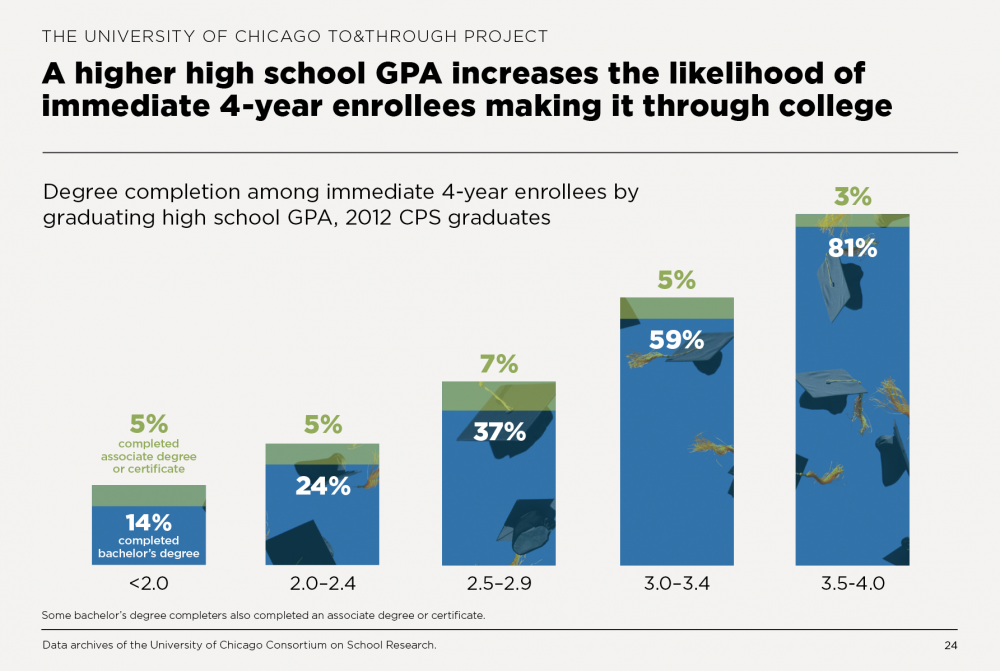

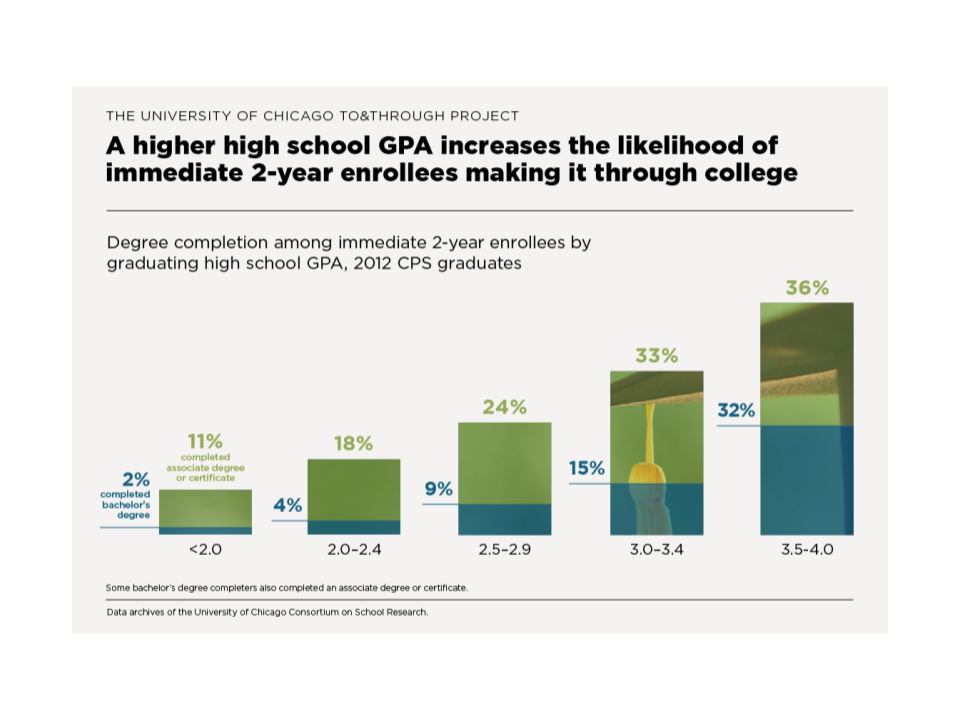
Chicago’s Quest to Propel More Students To and Through
Image
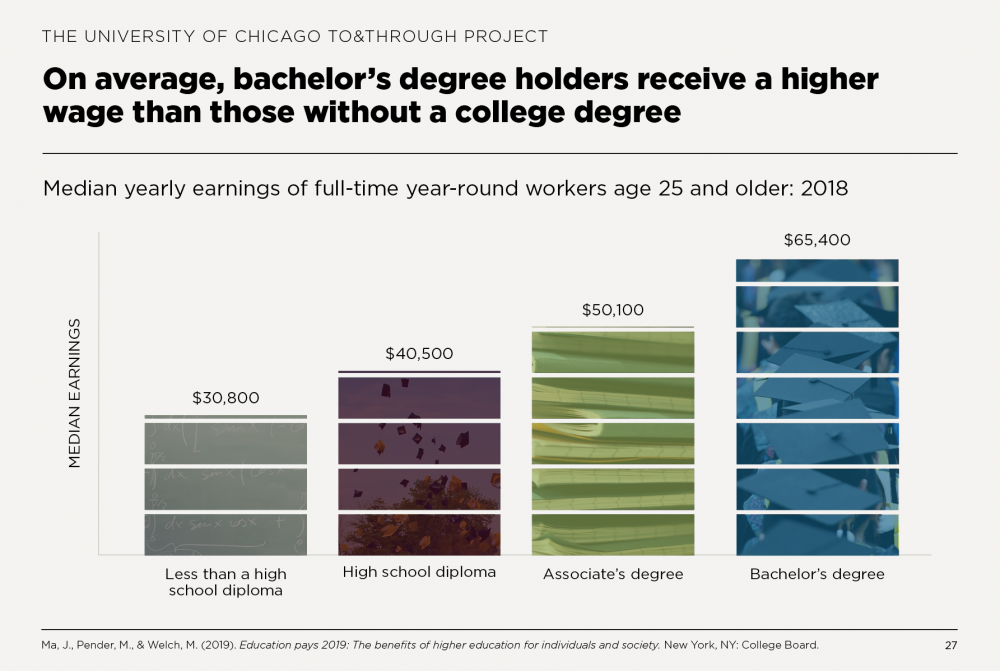

Chicago Student Attainment by the Community Area in Which They Live
Image
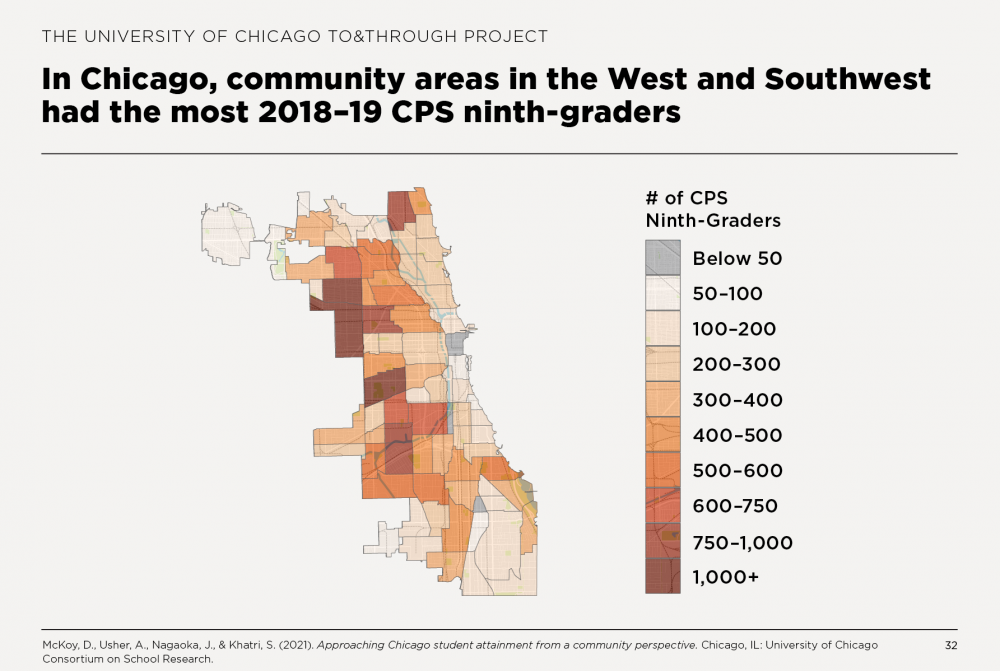

Image
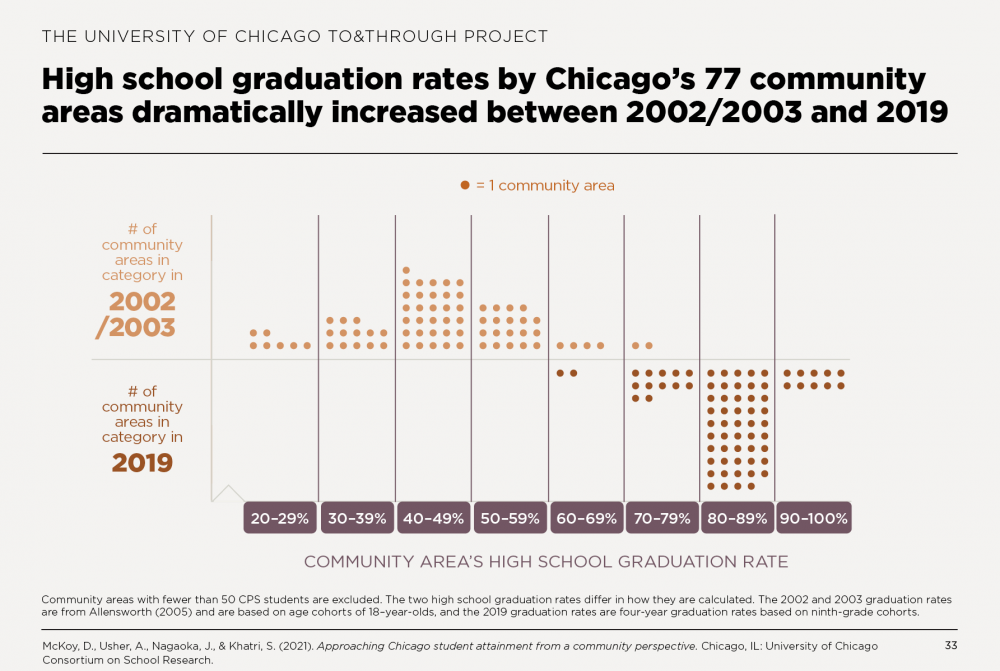

Image
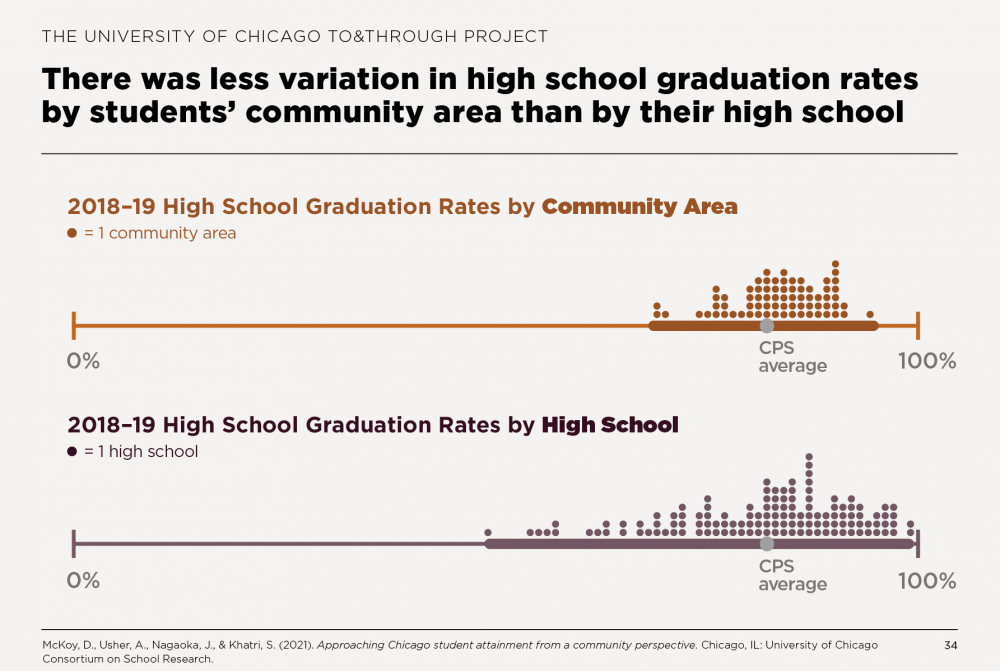

Image
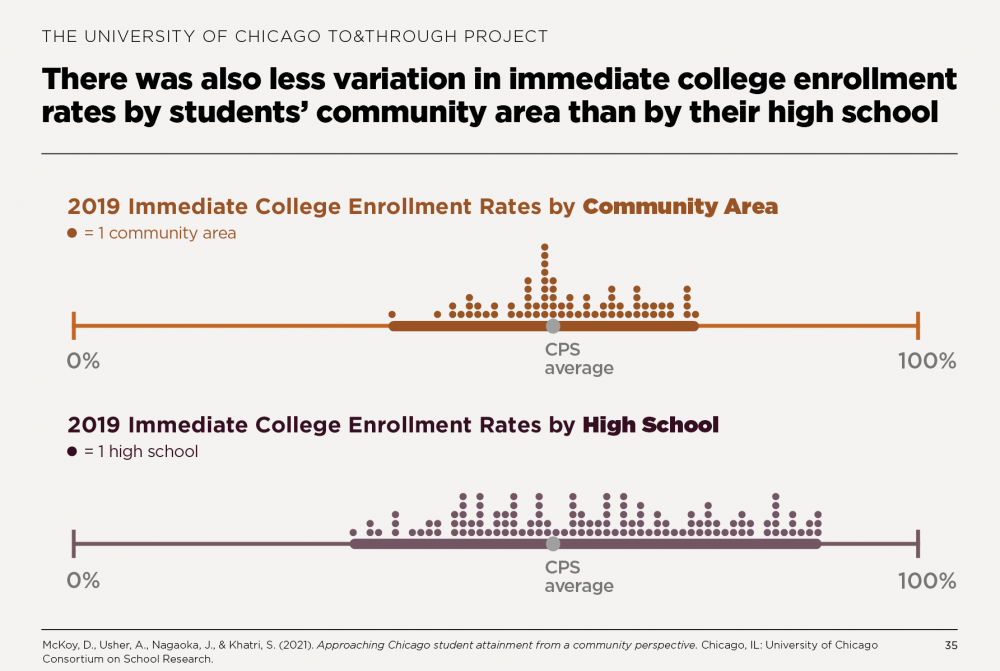

Image


Chicago’s Rising High School Graduation Rate
Chicago's Immediate College Enrollment Rates
Are Chicago’s Immediate College Enrollees Completing Degrees?
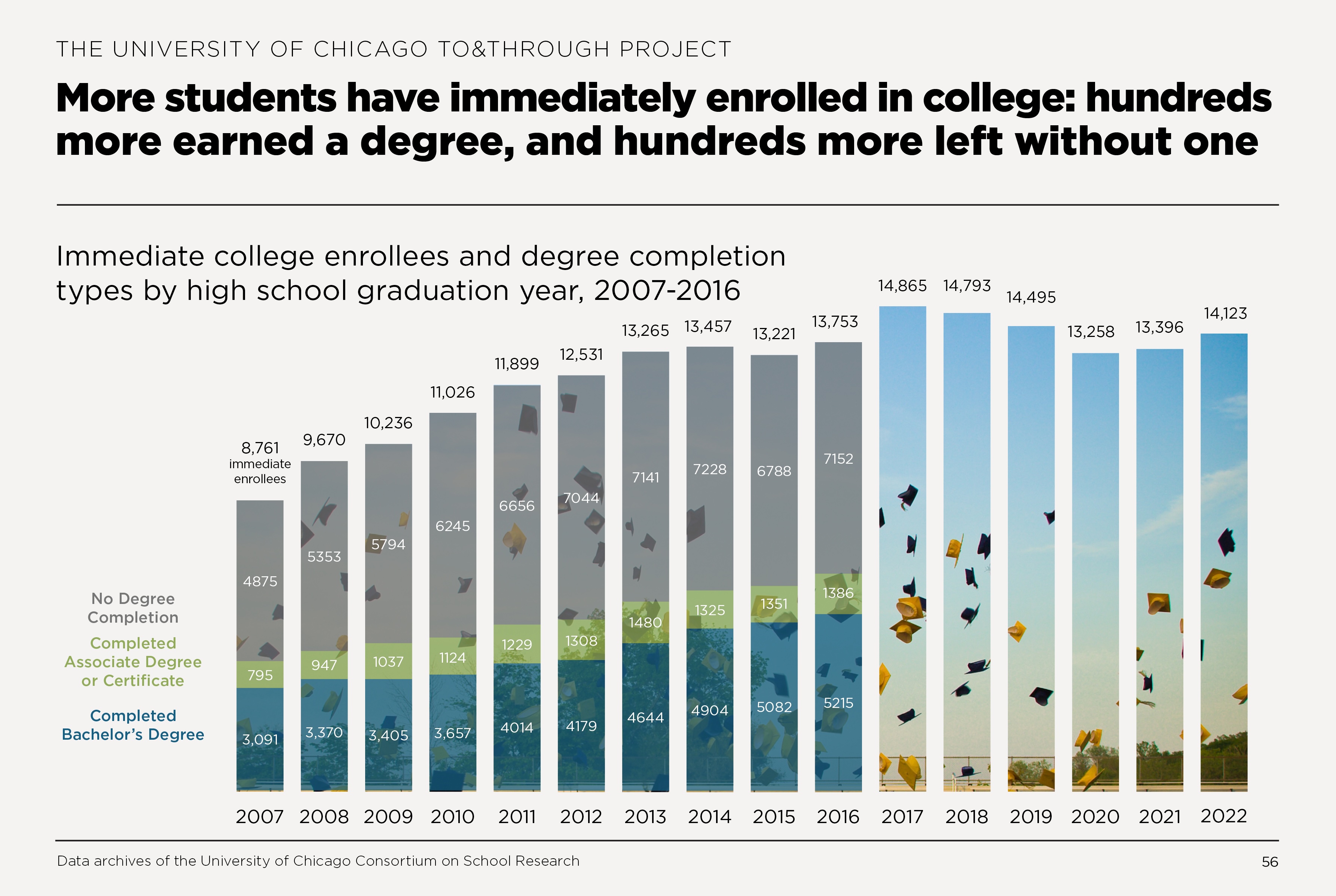
How the Milestones That Matter Most for College Success Predict Students’ Future Attainment
Image
